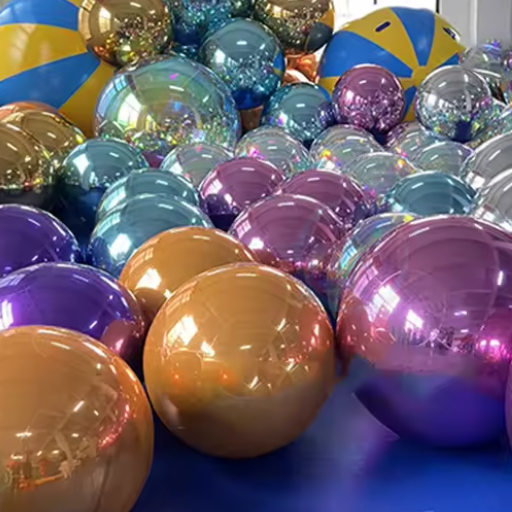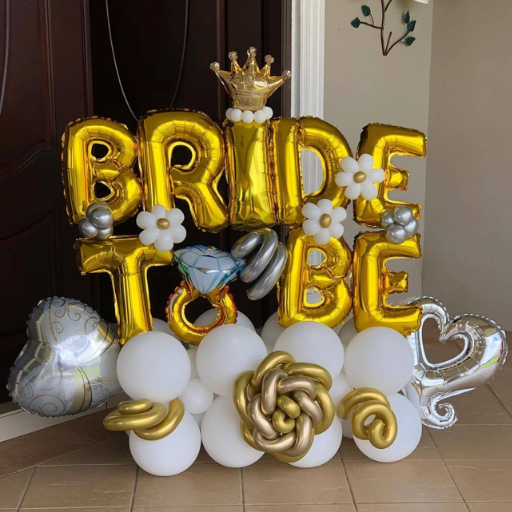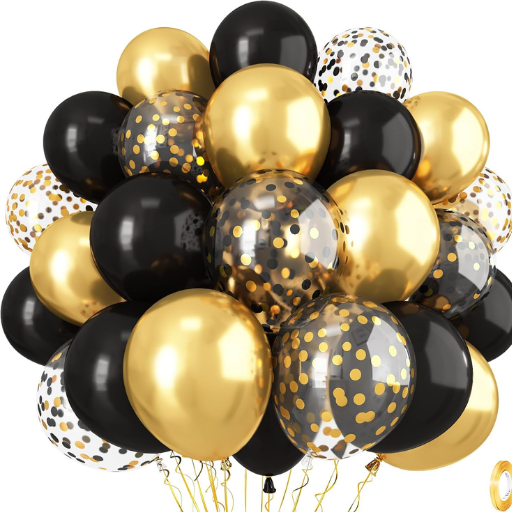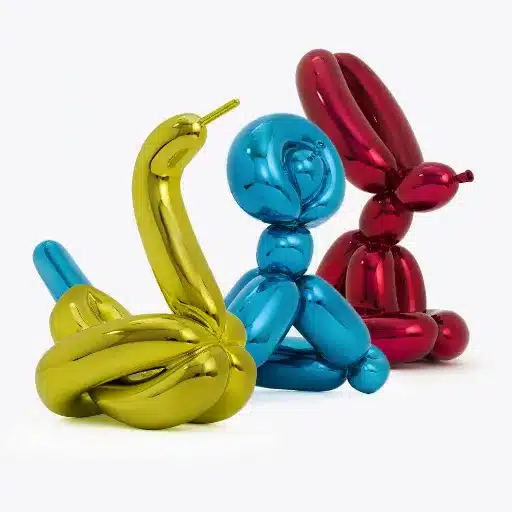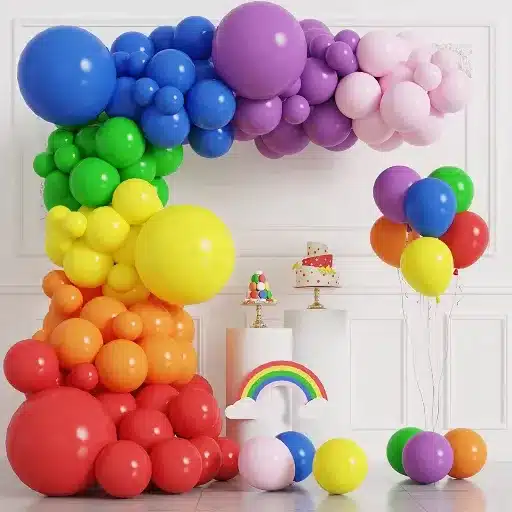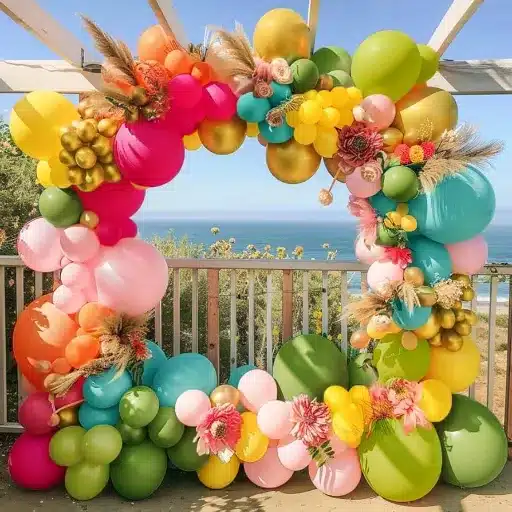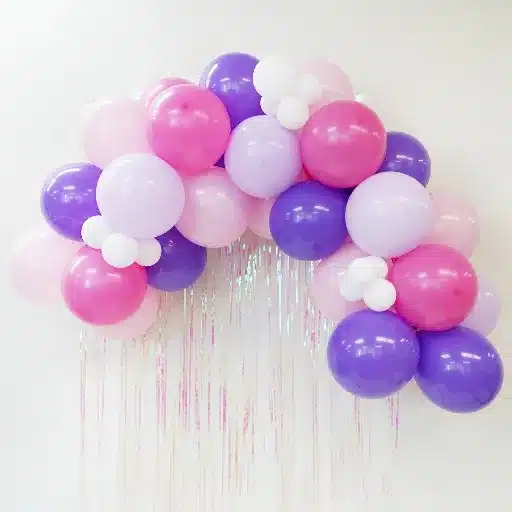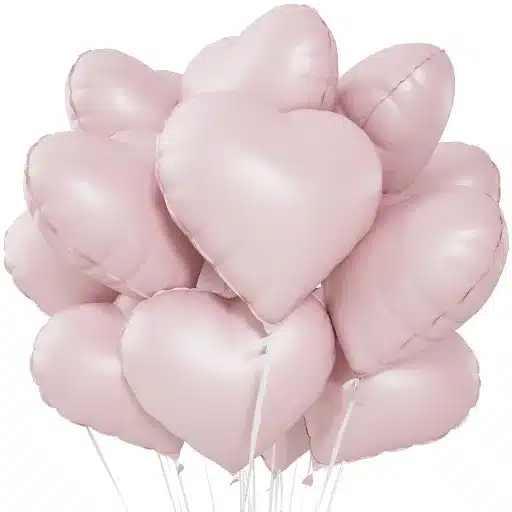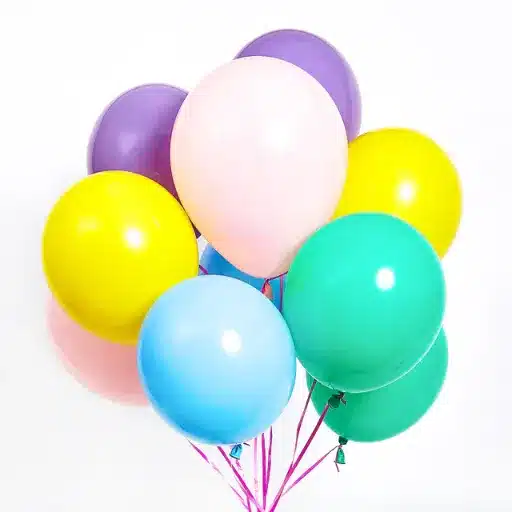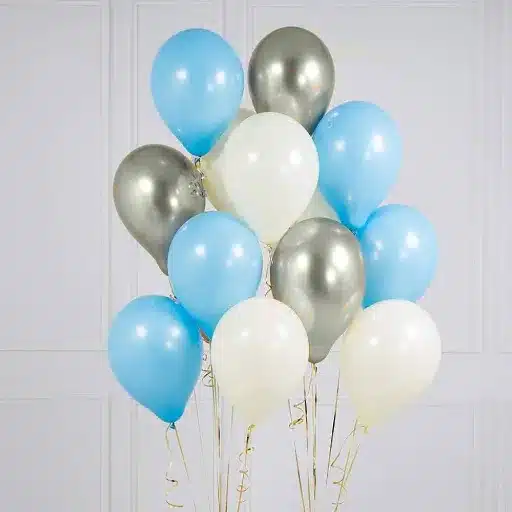The art of making balloon animals has always been a combination of fantasy, imagination, and dexterity that a wide range of audiences found engaging. If you want to perform at a young lad’s birthday celebration, enliven a local gathering, or just learn a fun and rare hobby, then you can easily go for the art of balloon twisting. This beginner’s guide will introduce you to the basic methods and twists necessary to form your very first balloon animals. We will assist you in selecting the right balloons to designing simple but strikingly impressive shapes, thus making you the one to show off your ability to impress others with this newly acquired skill. You are about to change a common balloon into an exceptional masterpiece!
Introduction to Balloon Twisting
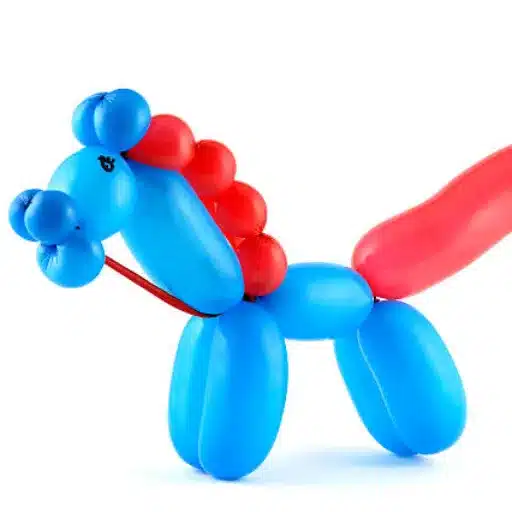
Balloon twisting is a thrilling and artistic pastime; it can be amazing if you apply some basic techniques and practice to your learning process.
What Are Balloon Animals?
Balloon animals are mystical and magical beings that are created by twisting and manipulating modeling balloons into forms that look like animals, objects, or even characters. These colorful and nonsensical pursuants are formed from long latex balloons that are very soft and pliable and can stretch without bursting. They are widely used by party entertainers, clowns and hobbyists alike to make events like birthday parties, fairs and carnivals more fun and creative.
The practice of balloon twisting has evolved massively over time, and currently, there is a plethora of designs to choose from. Simple balloon animals such as dogs, swords, and giraffes are really easy to learn as they mostly need just a few basic twists. However, some advanced balloon artists or “twisters” have the ability to create complex designs that involve the use of several balloons and intricate details like mythical creatures or entire themed sculptures.
Why Learn to Make Balloon Animals?
Making balloon animals is one of the most entertaining and captivating hobbies you can have since it also serves as an outlet for your creativity, an automatic stress reliever, and a perfect way to work on your social skills.
The first and foremost to mention is balloon twisting that unleashes the artists’ full potential, being that each design is at the same time creative and challenging. The healing aspect of the craft has often been pointed out by the practitioners; they believe that balloon manipulation can develop fine motor skills, increase focus, and even be a stress reliever. Furthermore, balloon animals are always welcomed at parties, thus they can be great tools for connecting with children or creating an exhilarating atmosphere at the party or event going on.
Essential Tools and Materials
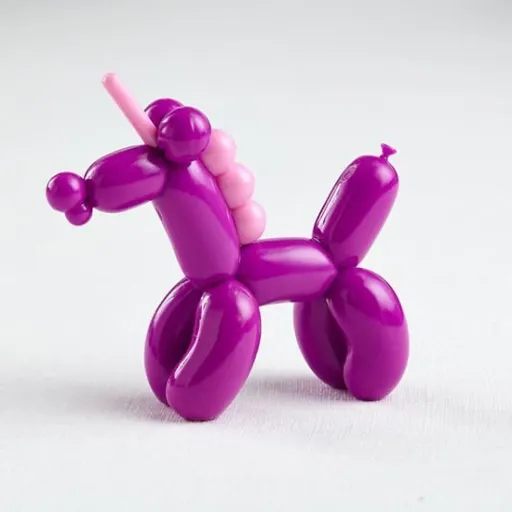
💡 Pro Tip: When it comes to balloon twisting, I would personally suggest that you first get some high-quality latex balloons along with a good pump for balloons and a pair of scissors. The availability of these items makes it possible to create not only good-looking but also lasting designs, and the process is still having fun.
Types of Balloons for Twisting
260 Balloons
The 260 balloon is the most common and the one that gets used the most when it comes to twisting. The term “260” gives a hint about its size when inflated—it is 2 inches in diameter and 60 inches long at about. These balloons are not just easy to use but also strong and able to adapt to the making of different shapes from animals and flowers to hats. Qualatex and Betallatex are among the top companies that produce excellent-quality 260 balloons.
160 Balloons
160 balloons are a bit smaller than the 260 ones, and their size is roughly 1 inch in diameter and 60 inches in length. For creating work with lots of detail, intricate and small decorating and patterns they are the best choice. Twisters often mix 160 with 260 balloons to highlight and add features to their pieces of art.
350 Balloons
Balloons of 350 size are bigger than 260 and come with a three-inch diameter and a length of fifty inches. They tend to be thicker and hence, stronger, which makes them good for turning into big, bold forms or for supporting the growth of more complicated balloon sculptures. These kinds of balloons are usually found in the field of professional balloon art where designing with larger than life-sized pieces is a requirement.
Using a Balloon Pump
A balloon pump is a universally recognized tool, serving as an indispensable aid for both the professional and the novice balloon artist. This device is responsible for the quicker, easier and more efficient process of inflating the balloons. There are basically two types of balloon pumps that one can find in the market—manual and electric ones. Lightweight and portable, the manual pumps are perfect for small projects or event decorations that require mobility. Its functioning involves the pushing of air into the balloon by hand through a series of arm movements. Electric pumps, on the contrary, offer a much quicker volume increase process that results in the savings of time that can be substantial when dealing with large-scale projects like balloon arches, garlands, or decorations for major events that consume a tremendous amount of time.
📊 Recent Data: Data from recent searches reveals that the use of electric balloon pumps has gained great popularity among party planners and decorators, among others, who deal with events. The latest electric pumps have dual-nozzle designs that allow the user to open two balloons’ ends and inflate them at the same time resulting in higher output. The reports indicate that the best-selling electric balloon pumps such as those by Idaodan and NuLink are capable of blowing up to 100 balloons in just 10 minutes. Thus, their efficiency has made them a necessary tool for large-scale balloon installations.
Step-by-Step Guide to Making Balloon Animals
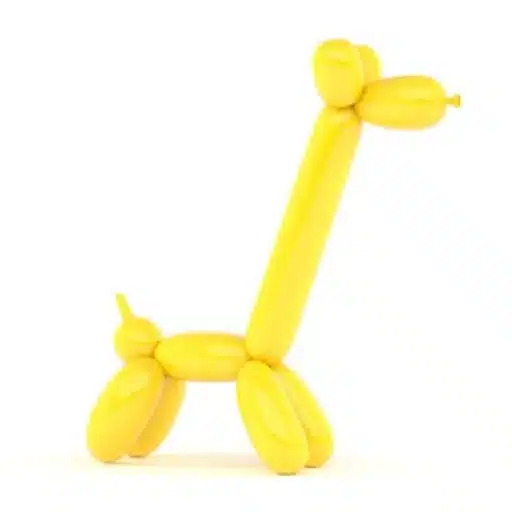
🚀 Getting Started: To begin with, I suggest using an electric balloon pump of very good quality, either from Idaodan or NuLink, which will greatly speed up the balloon inflating process. The efficiency of these pumps is so incredible that you can inflate thousands of balloons in a very short time, which is the perfect way if you want to create magnificent balloon animal displays.
Easy Balloon Animals for Beginners
🐕 Classic Dog Balloon
First, the balloon should be inflated, but only about 3 inches should be left uninflated at the end. The three parts of the animal are the head, ears, and neck, and they are made by the twists in the balloon. The legs and body continue after that, and the twists are locked as you go along. It usually takes about 2-3 minutes to complete such a design.
⚔️ Simple Balloon Sword
To make the sword, the balloon must be completely inflated first, and then the small bubble at the tip is created for the handle’s top. Near the base, two loops are twisted to form the cross-guard. This sword design is so simple and requires very few twists, thereby, making it very good for kids to use in pretend play for example.
🌸 Balloon Flower
The first step is to inflate two balloons—flower petals and the stem. Make the petals from the one balloon by twisting loops out of it, and then attach that to the inflated stem. It does not only add a lovely and colorful touch to the session of practice but also makes the session more fun!
Creating Balloon Flowers
Balloon flowers are a great project that can be done after you have already learned the basic balloon twisting techniques like making balloon dogs.
The first thing you will need is at least two balloons, which should preferably be of complementary colors for making petals and the stem. Pump up the petal’s balloon and leave about an inch of the balloon unpumped so that it is easy to twist it at the end. Make four to six loops of equal size, which are going to be the petals. Twist the loops together at the center to lock them in place and to make sure they are symmetrical.
After that, blow a green balloon for the stem and twist a little bubble at the top. Put this bubble inside the middle of the finished petals and twist it a little to lock it in. A lot of novices tend to neglect the part where the petals have to be adjusted so that they all are in the same plane, but this is an important requirement for making a flower that is pleasant to the eye.
Tips and Tricks for Successful Balloon Twisting
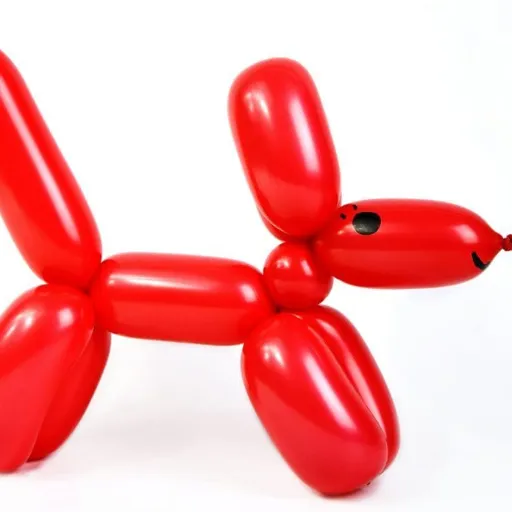
Common Mistakes to Avoid
❌ Overinflating Balloons
A very common mistake is inflating the balloons too much. Balloons that are overly inflated are at a higher risk of popping while being twisted. It is better to keep 1-2 inches of the end part of the balloon uninflated, which will allow the air to move during twisting and will also help in reducing the strain on the balloon material.
❌ Using the Wrong Type of Balloons
Twisting is not possible with every type of balloon. It is very necessary to use high-quality twisting balloons such as 260Q that are specifically made for the purpose of being durable and flexible. Using cheaper or normal balloons meant for parties usually leads to lamentation and breakage.
❌ Improper Grip and Handling
If the grip of the balloon is wrong, then it would be very difficult to maintain tension or the twists would be uneven. Always grip the balloon well but at the same time do not apply more force than necessary, as this will lead to the popping of the balloon.
Basic Balloon Twists Explained
| Twist Type | Description |
|---|---|
| The Basic Twist (or Lock Twist) | This is the simplest and most basic twist in balloon art. Start by taking a firm hold of the balloon in one hand and using the other to pinch and twist it at the point you want. An often-used technique is to turn the balloon around 3-4 times to keep the twist. Experienced balloon twisters advise that leaving about an inch of non-inflated space at the end of the balloon makes it easier to twist without the risk of popping. |
| The Fold Twist | The fold twist to make shapes like bunny ears or flowers is done by making a loop with the balloon and twisting it at the base. Studies show this twist is especially useful for creating even designs if the loop is about 4-6 inches long. |
| The Pinch Twist | The pinch twist is often done for very small, highlighted features such as eyes or noses. It consists of twisting a small piece of the balloon and then folding it back on itself. Statistics from beginner-level tutorials show that twisting smaller pieces (about 2 inches) is the best way to get pronounced features. |
Creative Ideas to Expand Your Balloon Skills
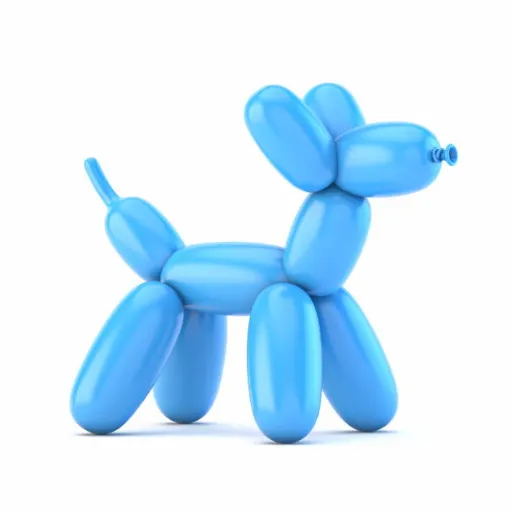
Fun Twisting Challenges
1. Replicating Real-Life Objects
Push your imagination to create actual items like a guitar, a coffee mug, or a vase of flowers. Elaborate designs like a rose can mean these accuracy fold twists or layers of bubbles to add atacoma. As per the latest trends, the portrayal of balloons has become a hot topic among users of social media, with “balloon art” being the subject of a 35% increase in 2023 inquiries.
2. Speed Twisting Competitions
Speed twisting contests are a daring challenge for you and your friends to diversify the number of balloon figures you can produce in a certain period. For instance, the off-stage balloon artists compete with each other by trying to make a simple balloon dog in less than 20 seconds. The practice of speed twisting not only develops your skillful fingers but also your working speed.
3. Mixing Multiple Balloons
Try joining different colors, sizes, and types of balloons together with your creativity to form complex designs such as a butterfly with many-colored wings or a woven balloon basket. Mixing overlong balloons with the 260Q and 160Q ones can spice up your creations. Experts in balloon-making claim that the doubling of both the art styles and the sizes has landed them higher audience engagement at events.
Incorporating Balloon Animals into Events
There’s no doubt about it, balloon animals have become an indispensable part of the event industry, as they not only bring life but also a very attractive and engaging atmosphere to the parties involving guests of all ages. It doesn’t matter if it’s a birthday party, wedding, formal business function, or a community gathering; these fun and funny creations always have their share of fun and creativity.
At children’s parties, popular balloon creations like dogs, swords, and butterflies are guaranteed to please the audience, while more artistic designs, such as floral arrangements or cartoon characters, are in great demand during weddings and upscale events. Balloon twisting stations at the parties do not only give the guests an interactive experience by showcasing the professional balloon artists who are creating the custom designs right before their eyes, but they also ensure that the guests are involved in a lively atmosphere.
Reference Sources
-
YouTube Playlist: Easy Balloon Animals for Beginners
This playlist includes tutorials for making simple balloon animals like a balloon dog, flower, and even a hippo.
Watch the playlist here -
Mossieur Ballon: Learn Balloon Twisting from Scratch
This website offers video tutorials and step-by-step photo guides, perfect for beginners and even advanced learners.
Explore the tutorials here -
WikiHow: How to Make Balloon Animals
A detailed guide with step-by-step instructions and illustrations for creating various balloon animals.
Read the guide here
Frequently Asked Questions (FAQs)
🎈 Ready to Start Your Balloon Twisting Journey?
With practice and patience, you’ll be creating amazing balloon animals that delight audiences of all ages. Remember, every expert was once a beginner—so grab your balloons and pump, and let your creativity soar!

